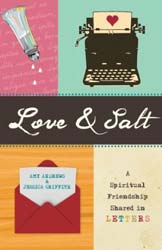It’s been my very good luck to read some excellent books lately for the Patheos book club. One of my favorites so far has been Chris Haw’s “From Willow Creek to Sacred Heart: Rekindling my love for Catholicism.” Even before I had finished reading, I had a list of at least ten people to whom I wanted to pass on this book. I have many friends and family who are Evangelical, and at times have felt we were speaking past each other when engaging the topic of religion.
“You need to purify your belief system of any -isms,” I’ve been told for instance, which is impossible, since I practice Catholic-ism. And I’m sure I’ve made my share of clunky comments or arguments as well. This book does the nitty gritty work of having the Evangelical/Catholic conversation for us via Haw’s journey from a Catholic childhood, to an Evangelical mega-church, and back to Catholicism. Without polemics or contempt for either faith practice, Haw explains what he found attractive in the non-denominational Willow Creek Church as a teenager and young adult.
Willow Creek had vibrant youth groups, a sprawling campus, an auditorium for worship with mezzanine levels, a stage, and a worthy sound and video system for their professional worship band. The services were mesmerizing and relevant compared to the dirge-like Catholic Mass of his former Parish. And he was soon encouraged to make use of his gifts and talents within the Willow Creek Community.
“While ministering to the already convinced, Willow Creek’s leaders had long been in discernment about how to attract the ‘unchurched’ into their congregation. They judged that the modern world, in its increasing secularization, had grown weary of the stuffiness of old-school church services and their mystifying religious imagery. People wanted something more accessible, more ‘relevant,’ something without an embarrassingly religious gravitational pull.” (14)
Haw rejects his former Catholic Community, “Casually waving them off, considering them guilty of all the popular criticisms”:
- They probably worship Mary
- They engage in empty and dead ritualism
- they make up doctrines in contradiction with the Bible
- They are credulous enough to believe the bread and wine is literally Jesus
- They are burdened with a long list of historical sins
- and they are so old fashioned that women are not in leadership.
“Though a fair-minded critic might have pointed out that I had never read a Catholic theologian, I would have insisted that was beside the point. I found myself miraculously capable of judging over a millennium of church history as entirely corrupt, without knowing any of it.” (21)
After college, Haw became involved with a community ministering to the poor in the crime ridden and decaying neighborhood of Camden, New Jersey. There, Haw begins worshiping at Sacred Heart Parish. Over the course of a gradual reintroduction to Catholicism, Haw addresses each one of his former criticisms of Catholicism and how he reconciled them with theology, history, and his own very personal encounter with Catholic liturgy.
In Camden, living in the midst of violence and desolation, Haw sees the need for an incarnate faith, one that takes into account the realities of life in a harsh and often violent world. With a steady command of Girardian philosophy, Haw learns to appreciate the pagan origins of divine sacrifice, while also differentiating Christ’s death and resurrection from all myths that came before it. He explores the impossibility of Non-denominationalism, and how in seeking to hold no prejudices, many Christians limit the possibilities of faith. In a chapter on Art and Apocalypse, he sees the need for beautiful art and architecture, and explores the balance of the Church’s wealth in art with the mandate to care for the poor.
“From Willow Creek to Sacred Heart” is an important book that hosts a fair dialogue between two religious groups that share many of the same strengths, and also many of the same blind spots. He gives the Evangelical movement a chance to speak, and then the Catholic Church speaks back in such a way that neither faith could misunderstand each other. Haw’s purpose is not to establish the superiority of one faith practice over another, but to explain why young people might leave the Catholic Church. What do they find attractive in Evangelical churches? And why might an Evangelical return to a Catholic Mass when they’ve been “freed” from all the rituals and rules and retroactive thinking that Catholics seem to embrace?
I recommend “From Willow Creek to Sacred Heart” for any Catholic or Evangelical who’s interested in this dialogue.











